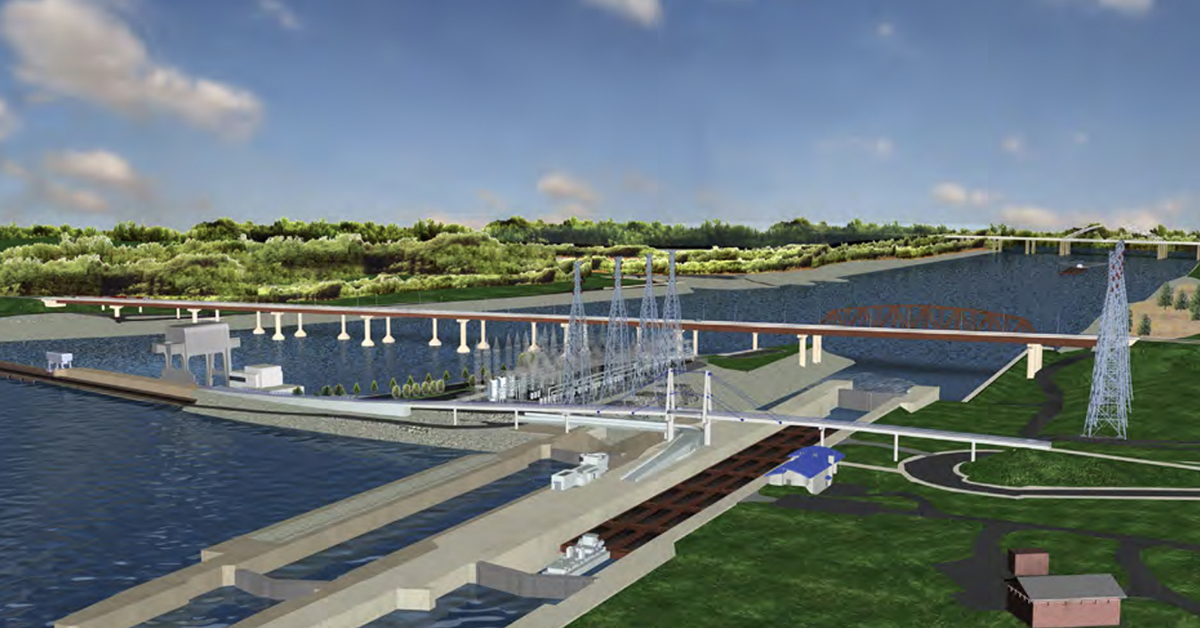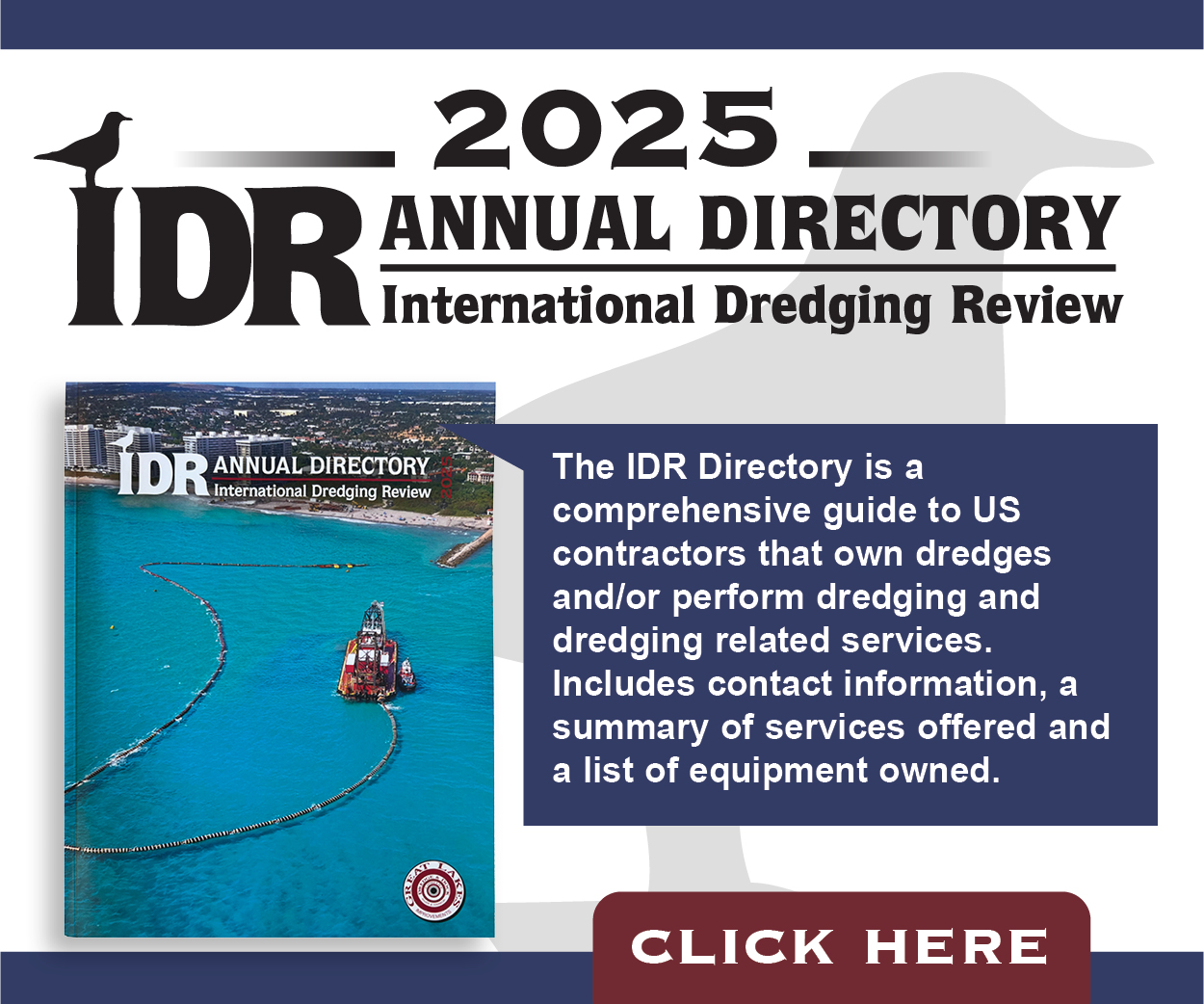Crews are about one-third of the way through placing concrete for the enormous monoliths at the Kentucky Lock Addition Project at Tennessee River Mile 22.4.
Jeremiah Manning, Kentucky Lock resident engineer, and Caleb Skinner, supervisory navigation facilities manager for Kentucky and Barkley locks, updated Paducah (Ky.) Propeller Club members on the project during the club’s February 12 meeting.
The $380 million lock monolith contract, awarded to Thalle Construction September 30, 2021, is scheduled to be completed in May 2027, leaving only one or two remaining contracts, depending on how funding is provided to the project, Manning said.
The remaining scope of work includes the upstream and downstream approach walls; mechanical and electrical components; maintenance and operations building; middle wall and utility bridges; and site development.
The project is adding a 1,200-foot-long, 110-foot-wide lock chamber that is being built alongside a 600-foot-long chamber where traffic is continuing to transit. Alongside the 1.65 million safe man-hours on the project, a point of pride is that over the past four years of the lock monolith contract being implemented, the existing chamber has been closed fewer than 20 days, even with the cofferdam being built immediately alongside it, Manning said.
About 200 to 300 workers are at the site, working 24 hours a day, six days a week, he said.
The lock addition project was first authorized in the Water Resources Development Act of 1996 and was reauthorized in the 2020 WRDA. The Corps of Engineers certifies project costs every two years. As of 2022, the project was projected at the 80 percent confidence level to be complete in March 2033. However, Manning said, “We’re definitely facing some impacts and challenges.”
A presentation that Elizabeth Burks, chief of the Nashville Engineer District’s Integrated Project Office, gave to the Inland Waterways Users Board December 13 about the project indicated that maintaining a July 2029 lock operational date would be a challenge, especially since a planned integrated design and construction integrated strategy is no longer feasible due to increased costs. She said the team is working to determine alternate courses of action utilizing a design-bid-build process instead. Additionally, the presentation noted that the Corps’ Inland Navigation Design Center (INDC) was taking over as the designer of record.
Manning told the club that updated costs and project schedule dates are expected to be released at the next Inland Waterways Users Board meeting, tentatively scheduled for April 3 in Paducah, and that the Corps will have a much better idea of the schedule once a contract for the lock approach walls is awarded in fiscal year 2025. Burks’ presentation to the IWUB indicated that awarding that contract is dependent on receiving a $218 million earmark.
The same presentation, which is posted publicly online on the IWUB website, indicates that a preliminary look at the 2024 update showed that the total cost of the project, estimated at $1.561 billion in 2022, “has increased significantly” and that Corps headquarters had commissioned an engineering technical review while the INDC is conducting a design review and validation. The Nashville Engineer District also sought an independent construction estimate outside of the Corps of Engineers.
Project managers have faced numerous challenges throughout construction.
“We have some of the most difficult geological conditions in the world right here,” Manning said, naming one of them.
Much of the bedrock is composed of limestone, which contains minerals that dissolve when exposed to water. This creates karst or cave landscapes. Crews found as they drilled and blasted out rock to create the new lock chamber that they were encountering voids, he said. Those voids had to be filled with “dental concrete,” he said, comparing it to a dentist using a composite filling to pack the void of a cavity in a tooth.
Additionally, he said, the region is part of the New Madrid Seismic Zone, rated as the highest seismic zone in the country and therefore containing the strictest design codes.
Additionally, he noted funding challenges during most of the project’s history, with the project not receiving efficient annual funding until around late 2016 or early 2017, coinciding with the nearing completion of construction at Olmsted Locks and Dam just downstream on the Ohio River.
Weather and water conditions are continuing concerns that could further impact the construction schedule, Manning said. He pointed out that the lower Tennessee River is forecast to approach flood stages within days.
“It’s the first time we’ve seen that since we’ve been behind the cofferdam,” Manning said.
If the river were projected to crest 10 or 11 feet higher, crews would need to consider an orderly evacuation of the construction site for both people and equipment, allowing the site to be flooded and then dewatered after the river receded, he said. Crews continue to closely monitor the forecast.
Crews moved a massive amount of concrete last year, Manning said, but added, “We have to get 10 to 15 percent better this year than we did last year to stay on track or schedule.”




